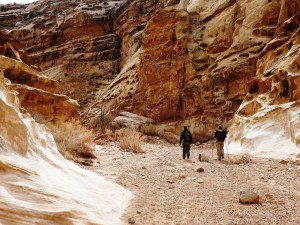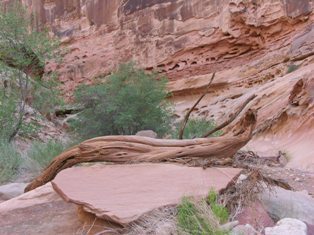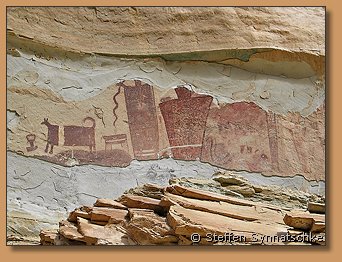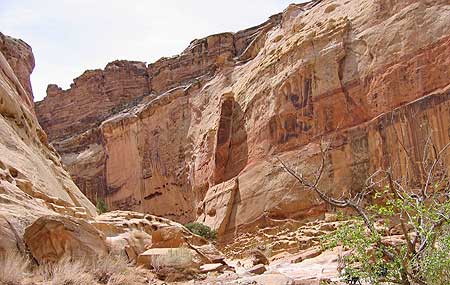Crack Canyon San Rafael Swell
San Rafael Swell slot canyons are Little Wild Horse Canyon, Bell Canyon, Chute Canyon, Crack Canyon, Ding Canyon, Dang Canyon, and Baptist Draw.
It takes time to create gps routes, especially if you want to have a full track log for each route. The cost of a TrekNow route is less than one dollar per route.


Tom s Utah Canyoneering Guide offers illustrated route descriptions to canyons in Zion, Escalante, Robbers Roost, Cedar Mesa, North Wash, and San Rafael Swell.
Overview The San Rafael Swell is a huge anticline, measuring 80X40 miles 125X65 kms. Most of the land is arid or desert, but a few areas in higher elevation.
- General Information: Crack Canyon is a zestful canyoneering adventure. The canyon contains three enjoyable sections of narrows and can be completed by.
- Slot canyons of The San Rafael Swell, Utah, including Little Wild Horse Canyon, Crack Canyon, Baptist Draw and Muddy Creek.
- The San Rafael Swell, west central Utah; wilderness area of slot canyons, old mines, mountains, eroded rock and open prairie.
The San Rafael Swell area hosts a number of rugged, desolate technical and non-technical canyoneering adventures for those willing to leave the beaten path.

.jpg)
San Rafael Swell
THE SAN RAFAEL SWELL WILDERNESS. Geology Exposed; Habitat for Wildlife and Adventurers; Wilderness Recognized 50 Years Ago; IPP: The Phantom Power Plant.

San Rafael Swell slot canyons - an introduction
Canyon route descriptions: Baptist Draw/Upper Chute Canyon,
Bell Canyon,
Crack Canyon,
Cistern and Ramp Canyons,
Crawford Draw,
Devils Canyon,
Ding and Dang Canyons,
Eardley Canyon,
Forgotten Canyon,
Iron Wash, North Fork,
Little Wild Horse Canyon, Music Canyon,
Muddy Creek
Map of the San Rafael Swell.
Trailhead and Map Trail Description
Distance and Difficulty Hiking Time What to Bring
Let s explore. -- Entering Crack Canyon
Crack Canyon is located in southcentral Utah, north of the small town of Hanksville off Highway 24. When you reach the Goblin Valley turnoff on Highway 24, head west on the paved road for about 5 miles to the T-junction where you could turn left and head to Goblin. On this trip, however, keep going west on the Temple Mountain Road which quickly turns to dirt. Follow this road for about two miles beyond the t-junction until the road forks off to the left southwest. This is a narrow dirt road and most cars should have little trouble reaching the trailhead in good, dry weather.
Drive along this dirt road until N 38.38.580, W 110.44.711, at which point the road takes a sharp bend to the right. Here, you will find a small pulloff and a rough parking area for Crack Canyon. Most cars will want to park here, but you follow the rough track in a hardy 4-wheel drive vehicle about. 7 miles until the actual trailhead, but do this at your own risk. There are a lot of loose rock, and on one trip, a large rock flipped up and put a large dent in the truck we were with. You can park your vehicle in the vicinity of N 38.38.061, W 110.44.491.
Click HERE to view the approximate starting coordinates and map.
Awesome tunnel. -- Looking into the short subway section
The journey through Crack Canyon is another one of this area s local treasures in the San Rafael Swell near Goblin Valley that won t leave you disappointed or fighting the crowds like with other more popular hikes in the area, including Little Wild Horse Canyon a few miles to the southwest. The canyon entrance with touring sandstone walls leading south is very wide with a small stream down the middle. The canyon slowly narrows, but the thousands of years of weathering on the sandstone walls and floor of the canyon have produced some amazing features, including some nice pot holes along the way. You feel like you are following a serpentine path, continually narrowing as you go. Kids will love to explore every nook and cranny along the way.
After walking for around. 5 miles, you come to the area referred to often as the Subway at N 38.37.774, W 110.44.352, as seen here. The section is rather short, but it is representative of the erosive power of water over the ages.
The famous subway. -- Making our way through the short, intriguing tunnel
After another. 35 miles or so, you arrive at a hands-on obstacle at N 38.37.531, W 110.44.290 where, if you decide to proceed, will require you to use a rope to climb down about 10 feet into a narrow section of the canyon. Judge your group well. In our case, we were with family, including children and dogs, and only two of us proceed a short distance in the canyon after the down climb. If you have a dog, you probably won t be able to get your dog out again unless you decide to hike miles and miles out another way. . . either to neighboring Chute Canyon or even south towards Goblin Valley. Otherwise, this would make a nice turn-around point to head back to your vehicle.
The distance you travel from the trailhead cited above will depend on how far you enter the canyon. Seeing most of the interesting features would be a pleasant, canine-friendly hike of a couple of miles over easy terrain.
Down climbing anyone. -- Doing a little hands-on work in Crack Canyon
About 2-3 hours, depending on any stops along the way.
Plenty of water. A GPS will be helpful in marking the way, but many GPS devices may not pick up reception in the deeper parts of the canyon, so don t plan on relying on it. There are plenty of spots where you can sit and enjoy a lunch break before heading back.